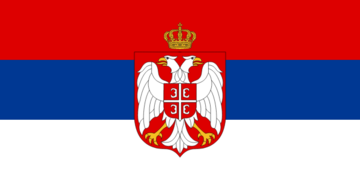Gamzigrad
Zajecar | Landmark
Gamzigrad (Serbian Cyrillic: Гамзиград, pronounced [ɡǎmziɡraːd]) is an archaeological site, spa resort and UNESCO World Heritage Site of Serbia, located south of the Danube river, in the city of Zaječar. It is the location of the ancient Roman complex of palaces and temples Felix Romuliana (Serbian: Феликс Ромулијана / Feliks Romulijana), built by Emperor Galerius in Dacia Ripensis. The main area covers 10 acres (40,000 m2). This archelogical site includes:
Northern Temple - The temple is of the tetrastile prostilos type, similar to the Jupiter temple at Diocletian Palace in Split, built in 305 AD. The remains include a high podium, cross-shaped crypt, stairway and sacrificial altar. It was dedicated to goddess Libera
Subject ID: 162354
MoreGamzigrad (Serbian Cyrillic: Гамзиград, pronounced [ɡǎmziɡraːd]) is an archaeological site, spa resort and UNESCO World Heritage Site of Serbia, located south of the Danube river, in the city of Zaječar. It is the location of the ancient Roman complex of palaces and temples Felix Romuliana (Serbian: Феликс Ромулијана / Feliks Romulijana), built by Emperor Galerius in Dacia Ripensis. The main area covers 10 acres (40,000 m2). This archelogical site includes:
Northern Temple - The temple is of the tetrastile prostilos type, similar to the Jupiter temple at Diocletian Palace in Split, built in 305 AD. The remains include a high podium, cross-shaped crypt, stairway and sacrificial altar. It was dedicated to goddess Libera
The architrave, doorposts, podium and pillars were made of green sandstone, frieze of white limestone while the figural capitals were made of marble.
Palace One - The palace consists of an octagonal core building, three peristiles and a smaller bathroom. The vestibulum (accessory hall) is preserved with marble plate and pillars of green serpent brecha and red granite. The floor of the vestibulum is completely covered by a mosaic carpet with a labyrinth in its center and geometric motifs.
The central hall (possible throne) is ornamented with geometrics and picturesque hunting scenes.
The triclinum is ornamented with precious colorful stone tiles (opus sectile) and the entrance is ornamented with a luxurious mosaic with the image of the Greek god Dionysus. Parts of a sculpture of Galerius depicted as Pantocrator (ruler of Universe) have been found throughout the buildings, a left hand holding a globe of red porphyry was found in the triclinum, the head was found in the south-east of the complex.
The Palace walls are covered with marble, green porphyry and frescoes. The marble sculptures depicting the Greek gods are made according to 5th and 4th century BC sculptural art.
Palace Two - The second palace and a building with a corridor has only been partially researched.
A rectangular peristile in the center is surrounded by premises of different sizes and functions
Subject ID: 162354
Subject ID: 162354

